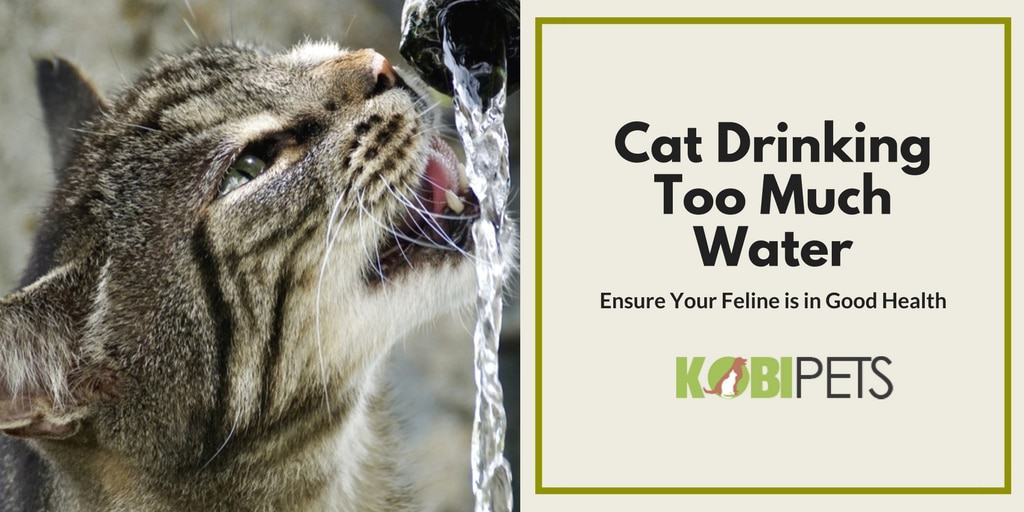
[vc_row][vc_column][vc_column_text]To stay healthy and hydrated your cat needs to drink clean and fresh water a couple of times a day, especially if it’s very active and outgoing. However, if you notice that your fur ball is drinking significantly more water than ever that might mean that it has a health issue.
How can I know if my cat’s drinking a lot of water?
A cat should consume approximately 60 mls/kg per day, and that means that a 5kg cat should drink about a cup of water per day to ensure that their body is working properly.
If your cat drinks anything more than that when the day is not hot, you should consider taking your small friend to the veterinarian or making a change in their food diet.[/vc_column_text][/vc_column][/vc_row][vc_row][vc_column][vc_custom_heading text=”Food Diet” google_fonts=”font_family:Roboto%3A100%2C100italic%2C300%2C300italic%2Cregular%2Citalic%2C500%2C500italic%2C700%2C700italic%2C900%2C900italic|font_style:700%20bold%20regular%3A700%3Anormal” css=”.vc_custom_1523712869241{margin-top: 0px !important;margin-bottom: 20px !important;border-bottom-width: 2px !important;padding-top: 0px !important;padding-bottom: 5px !important;border-bottom-color: #8f9302 !important;border-bottom-style: solid !important;}”][vc_column_text]The reason behind cats drinking too much (or too less) water might be their food diet which you’re responsible for. Dry foods for cat contain 6-10% of water, and wet or can foods contain approximately 75% of water. A cat eating solely wet and canned foods will need much less water than a cat eating dry foods.
It should never be a cat’s only source of nutrition because it lacks necessary vitamins, minerals, and other essential qualities. If you’re feeding your cat with dry foods more than with wet foods (which is understandable because some cats simply love crunchy food more), try to correct that with adding more wet food to your cat’s diet.[/vc_column_text][vc_single_image image=”1597″ alignment=”center” css=”.vc_custom_1523714281437{margin-bottom: 10px !important;}”][vc_column_text]
Image Credit: Pet Guide
[/vc_column_text][vc_column_text]Don’t worry, your cat will adjust over time, even though you can expect to see some protesting for a couple of days.
If that doesn’t correct the problem, and you notice that water intake has not reduced, that might be a sign of a bigger problem.[/vc_column_text][/vc_column][/vc_row][vc_row][vc_column][vc_custom_heading text=”Kidney Disease” google_fonts=”font_family:Roboto%3A100%2C100italic%2C300%2C300italic%2Cregular%2Citalic%2C500%2C500italic%2C700%2C700italic%2C900%2C900italic|font_style:700%20bold%20regular%3A700%3Anormal” css=”.vc_custom_1523712737861{margin-top: 0px !important;margin-bottom: 20px !important;border-bottom-width: 2px !important;padding-top: 0px !important;padding-bottom: 5px !important;border-bottom-color: #8f9302 !important;border-bottom-style: solid !important;}”][vc_column_text]Because cats don’t drink a lot of water, they’re at much higher risk of kidney issues and dehydration.
If your cat is old and it’s drinking a lot of water, then chronic kidney disease might be the problem.
Frequent urination (even outside the litter box) and drinking more water are two sure signs that your furry friend has this unfortunate disease.
These two symptoms are just two out of many, so learning all you can about chronic kidney disease, consulting the veterinarian and doing all kinds of blood and urine tests before doing anything rash is recommended.[/vc_column_text][vc_single_image image=”3045″][/vc_column][/vc_row][vc_row][vc_column][vc_custom_heading text=”Diabetes” google_fonts=”font_family:Roboto%3A100%2C100italic%2C300%2C300italic%2Cregular%2Citalic%2C500%2C500italic%2C700%2C700italic%2C900%2C900italic|font_style:700%20bold%20regular%3A700%3Anormal” css=”.vc_custom_1523712660109{margin-top: 0px !important;margin-bottom: 20px !important;border-bottom-width: 2px !important;padding-top: 0px !important;padding-bottom: 5px !important;border-bottom-color: #8f9302 !important;border-bottom-style: solid !important;}”][vc_column_text]Cats can get diabetes mellitus which happens when a cat’s body cannot produce insulin or when it doesn’t use it properly. Watch out for this signs and determine whether your cat has this illness:
- Weight loss
- Increased water consumption
- Bigger appetite
- Increased urination
This type of diabetes usually occurs in male and obese cats, but it can happen to your cat too! The surest way to fight this disease is to do whatever your vet tells you.[/vc_column_text][/vc_column][/vc_row][vc_row][vc_column][vc_custom_heading text=”Urinary Tract Disease” google_fonts=”font_family:Roboto%3A100%2C100italic%2C300%2C300italic%2Cregular%2Citalic%2C500%2C500italic%2C700%2C700italic%2C900%2C900italic|font_style:700%20bold%20regular%3A700%3Anormal” css=”.vc_custom_1523712598409{margin-top: 0px !important;margin-bottom: 20px !important;border-bottom-width: 2px !important;padding-top: 0px !important;padding-bottom: 5px !important;border-bottom-color: #8f9302 !important;border-bottom-style: solid !important;}”][vc_column_text]Once again, this is a disease that’s best treated by the vet, but here’s how you can recognize if your cat has it:
- Blood in the urine
- Straining after urination
- Licking the genitals after urination
This is a painful and severe condition, and it simply must be checked by the vet. Your cat might be in serious pain without you even noticing![/vc_column_text][/vc_column][/vc_row][vc_row][vc_column][vc_custom_heading text=”Hyperthyroidism” google_fonts=”font_family:Roboto%3A100%2C100italic%2C300%2C300italic%2Cregular%2Citalic%2C500%2C500italic%2C700%2C700italic%2C900%2C900italic|font_style:700%20bold%20regular%3A700%3Anormal” css=”.vc_custom_1523712517440{margin-top: 0px !important;margin-bottom: 20px !important;border-bottom-width: 2px !important;padding-top: 0px !important;padding-bottom: 5px !important;border-bottom-color: #8f9302 !important;border-bottom-style: solid !important;}”][/vc_column][/vc_row][vc_row][vc_column width=”1/2″][vc_column_text]Hyperthyroidism is a glandular disorder that’s common in cats. It can be recognized by these symptoms:
- Vomiting
- Diarrhea
- Hyperactivity
- Increased appetite
- Excessive thirst
- Increased shedding
- Weight loss
If you notice any of these symptoms don’t wait a second and contact your vet immediately![/vc_column_text][/vc_column][vc_column width=”1/2″][vc_single_image image=”1601″ alignment=”center”][/vc_column][/vc_row][vc_row css=”.vc_custom_1522762414838{background-color: #efebe1 !important;}”][vc_column][vc_custom_heading text=”But What Can I Do for My Cat?” google_fonts=”font_family:Roboto%3A100%2C100italic%2C300%2C300italic%2Cregular%2Citalic%2C500%2C500italic%2C700%2C700italic%2C900%2C900italic|font_style:700%20bold%20regular%3A700%3Anormal” css=”.vc_custom_1523712440216{margin-top: 0px !important;margin-bottom: 20px !important;border-bottom-width: 2px !important;padding-top: 0px !important;padding-bottom: 5px !important;border-bottom-color: #8f9302 !important;border-bottom-style: solid !important;}”][vc_column_text]The only thing you can do is to ensure your feline is in good health is to do these things:
Clean the bowl regularly and religiously – Slime and bacteria can accumulate quickly in your kitty’s bowl, so empty it and give it a scrub in hot and soapy water every day.
Provide fresh water – If it comes to your attention that your cat is drinking water from other sources (shower, sink, pond, even toilet) rather than from a bowl, which might be a signal that your cat is simply not getting enough fresh water. You can solve this problem by getting a pet fountain of by simply adding more fresh water to the bowl every couple of hours.
Observe your cat – When they’re not sleeping cats are actually fascinating beings. Watch your cat while it’s eating, playing, and drinking, and get to know their habits. If you notice any changes in your cat’s behavior, then adjust its diet and consult your vet.[/vc_column_text][/vc_column][/vc_row]






